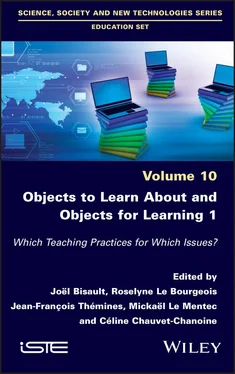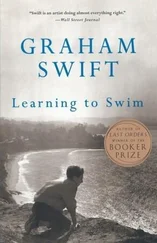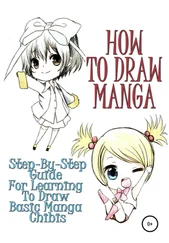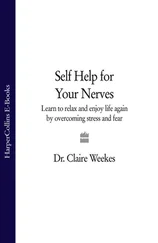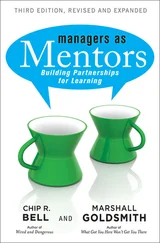November 2021
Preface written by Joël BISAULT, Roselyne LE BOURGEOIS, Jean-François THÉMINES, Mickaël LE MENTEC and Céline CHAUVET-CHANOINE.
1 1Twin pan scales, widely used in France until the 1960s/1970s. These types of scales have for a long time been a typical example of school equipment used in every elementary school.
2 2These batteries were widely used in France (in pocket lamps for example) until the 1960s/1970s and are still used in French elementary school for their practical side (metal plates to facilitate electrical contacts).
3 3“Repères temporels et spatiaux, découverte du monde”: examples of parts of the French syllabuses for pre-school.
4 4ZEPs were created in France in 1981 to advance equality of opportunity between pupils, taking into account the social problems of the areas concerned.
5 5Kergomard, P. (1886). L’éducation maternelle dans l’ècole, Librairie Hachette et Compagnie, Paris.
We would like to thank all those who contributed to this collective work: the participants in the June 2019 conference who agreed to re-engage with a view to authoring a chapter, the members of the conference’s scientific committee who undertook an expert review of the articles submitted and provided guidelines for editing when necessary and the colleagues or former colleagues who shared with us their expertise on specific topics.
We would particularly like to thank Sophie Pelissier who facilitated the contributions from our Hispanic colleagues, Catherine Rebiffé and Anne Delbrayelle for their invaluable help on French language issues and Karima Olechny for her advice on this English version.
Scientific committee of this publication
Jacques Audran (INSA Strasbourg), Christine Berzin (University of Picardie Jules Verne, CAREF), Joël Bisault (University of Picardie Jules Verne, CAREF), Justine Breton (University of Reims Champagne-Ardenne, CEREP), Céline Chauvet-Chanoine (University of Picardie Jules Verne, CAREF), Cora Cohen-Azria (University of Lille, CIREL), Anne Delbrayelle (University of Picardie Jules Verne, CAREF), Béatrice Finet (University of Picardie Jules Verne, CAREF), Joël Lebeaume (University of Paris, EDA), Roselyne Le Bourgeois (University of Picardie Jules Verne, CAREF), Anne-Laure Le Guern (University of Caen Normandy, CIRNEF), Mickaël Le Mentec (University of Picardie Jules Verne, CAREF), Corinne Marlot (Haute Ecole Pédagogique du canton de Vaud), Sophie Pelissier (University of Picardie Jules Verne, CAREF), Valérie Tartas (University of Toulouse-Jean Jaurès, CLLE) and Jean-François Thémines (University of Caen Normandy, ESO).
Introduction
In the Teaching Resources Store Cupboard: Investigating the Functions and Uses of Objects in the World of School
From the ferule to the touchscreen tablet, through alphabet primers to be leafed through or to be embroidered, translating earpieces for lessons, the cuddly toys of the very young, the virtual patients of future doctors, molecular models, home automation systems, the double decimeter, the oscilloscope, the map of the world, the recorder, jacks, marbles… These usual or ordinary, strange or unfamiliar, current or outdated objects are used in teaching and training, learning and education, classroom and playground. Material or virtual, made or disassembled, manipulated or transformed, they fall under the heading of didactic or pedagogical materials by reason of their functions and uses. These functions are multiple because these objects are, on the one hand. aids or resources for the content being taught and. on the other hand, indexing markers or testament to the content being appropriated. These classroom things and objects are thus an integral part of the curricula from nursery school to university. The uses of these objects, and therefore the practices of teachers and pupils, assign to them specific aims and references contributing to the elementarization, progressivity, flexibility and differentiation of the content. Hence, this investigation involves characterizing the contrasting points of view on the objects of this world in order to discuss their usage functions or their esteem functions 1and also their global or technical functions, their authenticity, their schoolification or even their misrepresentation or misappropriation.
The theme of “objects” is dear to me as a specialist of technology and technical education because objects created, put together and assembled, designed and used, analyzed and represented, are at the heart of this area of teaching. This theme is also dear to me because it crosses over between works and reflections devoted to material culture and those relating to technical culture (Lebeaume 2009, 2019a), whose spans are different according to the distinction made by Rabardel (1995), addressed below, between anthropocentric and technocentric perspectives.
This introductory text thus aims to invite an interrogation of the specificities, meanings and conditions for the admission of “objects for learning” and “objects to learn about” into the school world and beyond its borders. It opens by proposing a characterization of school objects and their role, with a cultural and historical perspective. Following on from that, it suggests a problematization of the uses of these objects in teaching practices, linked to the concepts of instrument and artifact. These two main points cover the two most important terms in the title of this work: “objects” and “practices”, as well as the features of all the chapters, which are characterized, on the one hand, by the very great diversity of the “objects” presented or investigated, and on the other hand, by focusing on analyses or testimonies of particularly innovative teaching practices.
I.1. Objects in school, objects of school
This first point deals with the “material culture” of the school very recently highlighted by an international conference (Figeac-Monthus 2018).
The “school form” as a particular mode of socialization (Vincent 1980; Vincent et al . 1994) favoring “the written culture” or the scriptural mode (Lahire 2008) sets standards and generates specific equipment, for example the chalkboard, school furniture – fixed at first and later mobile – grounds and equipment for individual or collective sports, classrooms for practical work with their glassware, their measuring or experimentation instruments, their machines… This category of “objects for learning” also includes many accessories which play a part or have at times played a part in pupils’ upbringing and in the discipline – in the original sense of the word – of school and of learning and in the teacher–pupil relationship, such as the dunce’s cap or other objects for corporal punishment.
In contrast to these corrective devices, more appealing objects are indications of the more play-orientated approaches of alternative pedagogies, well-illustrated by the materials devised by Froebel (1840), the father of the kindergarten. Those “Spielgaben” or “toys for active play” are also objects for learning, mainly shapes and actions in gymnastic games and songs. The advent of plastics at the very beginning of the 1960s and the strong social demand for education then legitimized these educational games, as they now are, at home and at kindergarten. Anchored in these traditions, the most recent official recommendations for kindergarten (2019) thus mention “games with various dice, lottery games, dominoes, battle games, board games or digital trail games, etc.” 2
I.1.2. School supplies, approved or prohibited objects
In the school resources store cupboard, “learning objects” are also supplies that show technological and commercial progress, for example writing implements (Reynolds fountain pen (1942), Bic pen (1952), Pentel felt tip (1962), Pelikan eraser (1977)) replacing the pen-holder, blotters, and inkwells (often hijacked into becoming receptacles for bits of chalk!). However, not all objects are allowed in school. We should not forget the long controversy that began in the late 1950s about Bic pens, debated in the notes of the journal L’Éducation Nationale from 1957 to 1965, at which point a circular gave it approval 3. The same happened again more recently with the prohibition of the use of cutters, considered dangerous but also a Class 6 weapon 4. For different reasons, programmable calculators are generally forbidden during exams 5while the use of cell phones is forbidden in class even if having them in one’s possession is permitted 6.
Читать дальше
